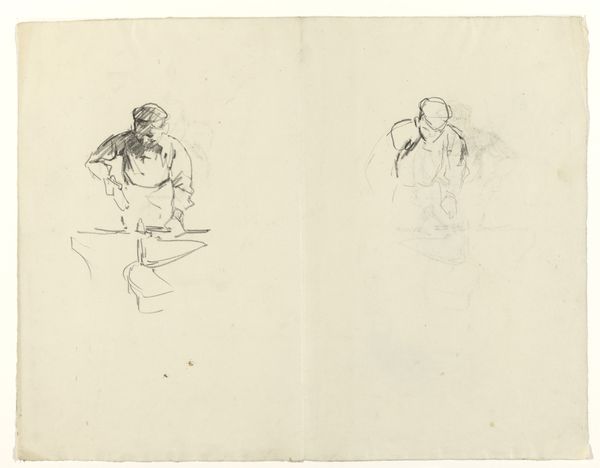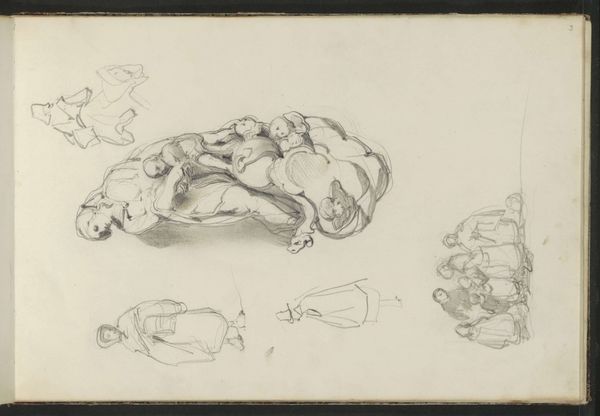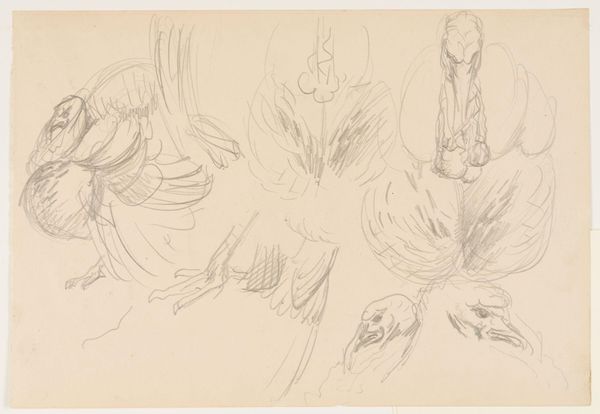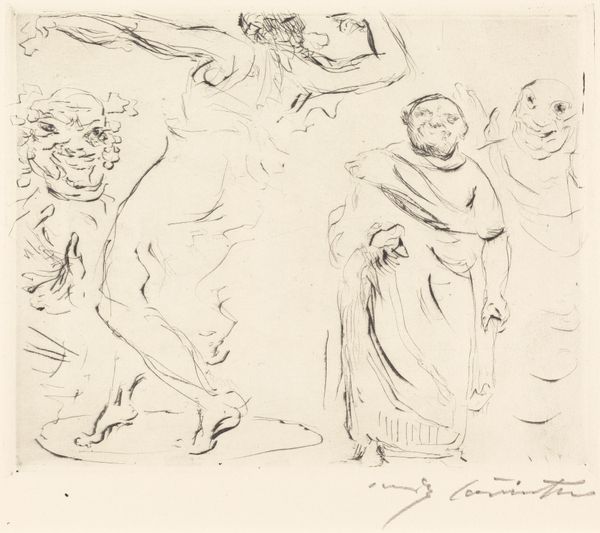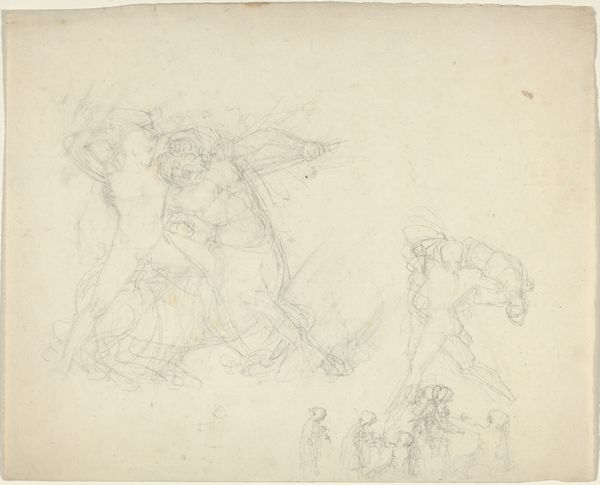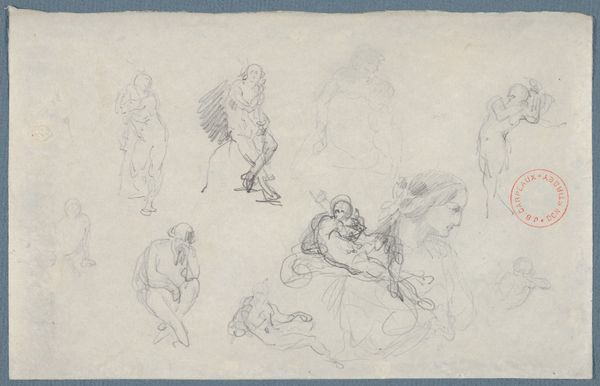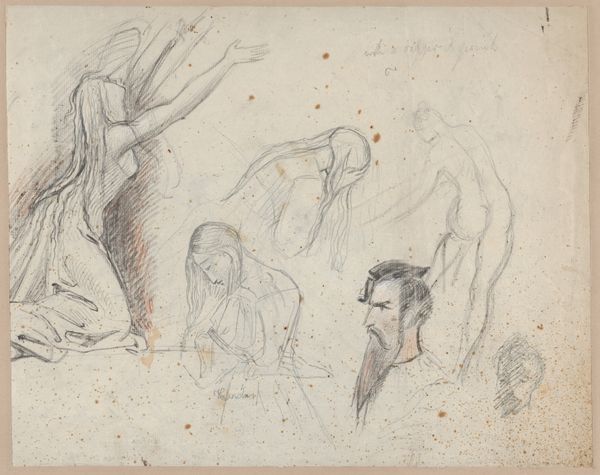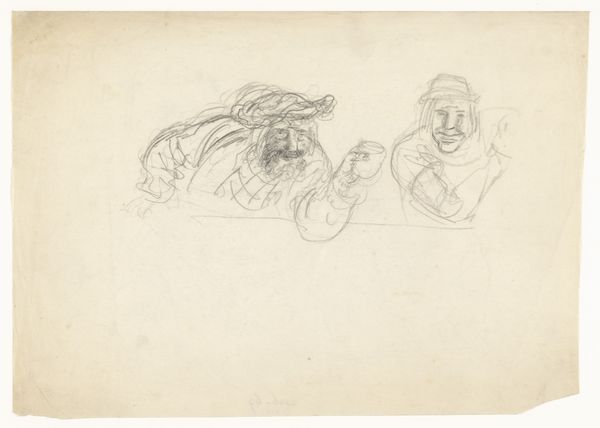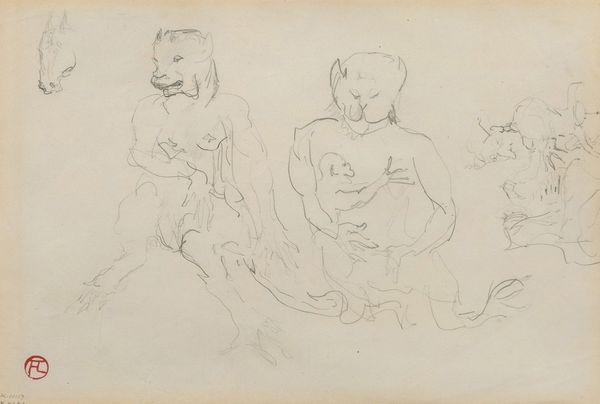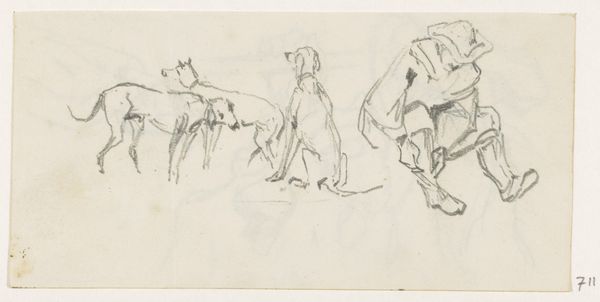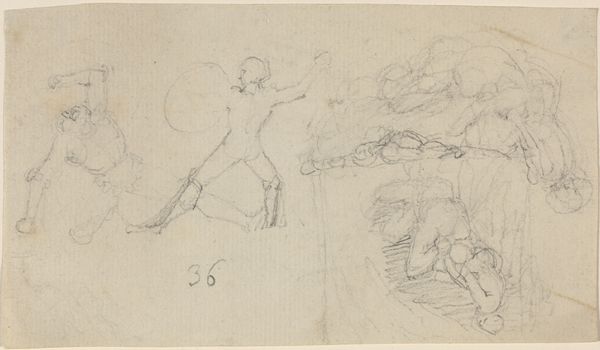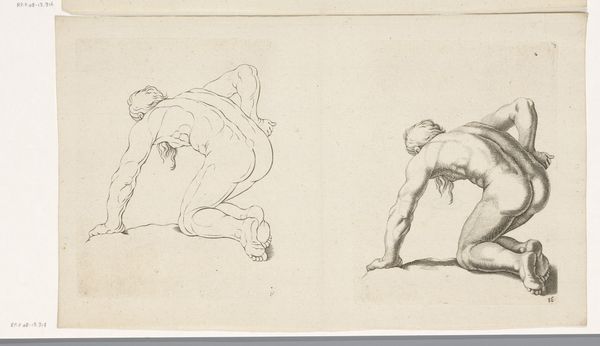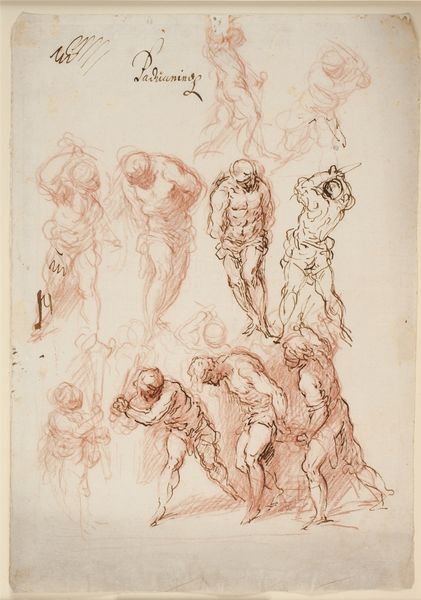
Drinkende reus, twee figuren, een gezicht met een vogel in het haar en het gezicht van een man c. 1936 - 1940
0:00
0:00
drawing, pencil, frottage
#
portrait
#
drawing
#
figuration
#
pencil
#
frottage
Dimensions: height 500 mm, width 700 mm
Copyright: Rijks Museum: Open Domain
Curator: We're looking at a drawing by Henk Henriët, made sometime between 1936 and 1940. It’s a pencil and frottage piece entitled "Drinkende reus, twee figuren, een gezicht met een vogel in het haar en het gezicht van een man," currently held at the Rijksmuseum. Editor: Well, immediately I’m struck by the tentative quality of the lines and the strange juxtaposition of scales. There’s an ethereal, dreamlike feel that's difficult to shake off. Curator: The loose sketch style certainly contributes to that. The figure on the left, presumably the "drinking giant," is rendered with visible layers and rubbed textures from the frottage technique, creating depth and form. Henriët experiments here, breaking the conventional form of portraiture. Editor: And what's fascinating is the lack of clear narrative. Who are these figures, and what’s their relationship? Is it a reflection of societal hierarchies, with the 'giant' looming large, dominating these almost caricatured smaller figures? Or perhaps a commentary on the individual versus the collective? Curator: Potentially. Consider that this drawing emerged during a period of immense social upheaval. Surrealism, with its focus on the subconscious and the irrational, offered a visual language to express the anxieties of the pre-war era. The fragmented composition mirrors a world feeling increasingly unstable. The use of frottage here isn't accidental. It suggests an attempt to unearth something hidden, like revealing the latent tensions within the social fabric. Editor: Yes, the roughness, even ugliness, in rendering conveys tension effectively. However, if we isolate the bird emerging from hair – an unusual visual choice – what meaning do you ascribe to that formally? Curator: I see it as a powerful surrealist gesture: unexpected forms placed in new relationships destabilize perception. As to social meaning: Birds often represent freedom and escape, and I think juxtaposing it to human visage reveals a yearning during restrictive times. Editor: I agree that the overall composition creates a dreamlike sense of disorientation and quiet unease that reflects the unsettling nature of the times. It highlights the psychological toll of witnessing social breakdown and coming upheaval. Curator: Precisely. Thank you for offering new thoughts about Henriët’s technical achievements and historical contexts, providing visitors with more insight into the artwork.
Comments
No comments
Be the first to comment and join the conversation on the ultimate creative platform.
